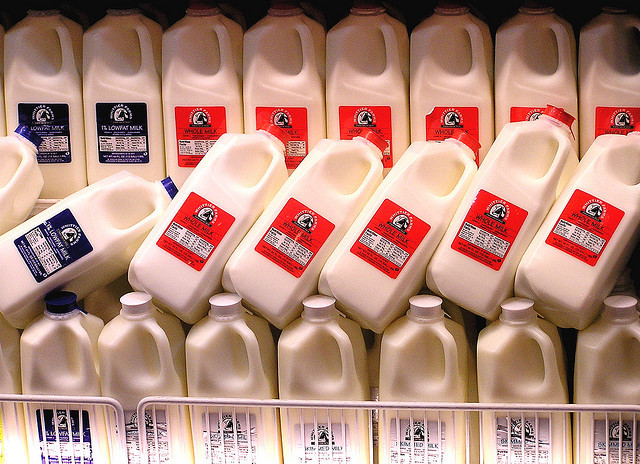Organic Milk Is Better For Humans Because Of Delicious Grass

(Muffet)
Cows’ stomachs are optimized to graze on grass. As ruminants, it’s just what they do, but modern milk production doesn’t give them opportunities to wander outside and eat grass. It turns out, though, that when cows get to eat grass, the milk they produce is better for humans.
How does that work? A study published this week in the journal PLOS One shows that milk from grass-fed cows, whether that milk is organic or not, has a different fat composition than milk that comes from cows that primarily eat corn.
Cows that eat grass produce milk with more omega-3 fatty acids. Those are the fats found in foods like flaxseeds and fish that we keep hearing that we should eat more of. While the science isn’t settled regarding how well omega-3 fatty acids protect humans from cardiovascular problems or why, they do seem to be better for us.
The fats in milk come from what the animal eats, after all. The same effect on fat composition happens in milk from conventional agriculture where the cows eat grass, so the key is knowing where your milk comes from and what the animals eat.
Of course, this study just happens to have received most of its funding from Organic Valley, a large distributor of organic dairy products. Scientists who didn’t receive any money from the company told the New York Times that its science looks pretty solid.
Organic Production Enhances Milk Nutritional Quality by Shifting Fatty Acid Composition: A United States–Wide, 18-Month Study
More Helpful Fatty Acids Found in Organic Milk [New York Times]
Want more consumer news? Visit our parent organization, Consumer Reports, for the latest on scams, recalls, and other consumer issues.

